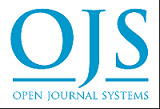Efektivitas varian metode terapi komplementer untuk fatigue pada pasien penyakit paru obstruktif kronik (PPOK): Tinjauan sistematik
DOI:
https://doi.org/10.33024/hjk.v18i2.198Keywords:
Fatigue, Penyakit Paru Obstruktif Kronik (PPOK), Terapi KomplementerAbstract
Background: The process of fighting chronic obstructive pulmonary disease (COPD) is a challenge that affects the patient's quality of life. Moreover, the inevitable symptoms of fatigue often result in limitations in physical, emotional, cognitive and social aspects. However, in overcoming this there are new opportunities, namely the use of complementary therapies to optimally treat fatigue, paving the way for more effective health care for COPD sufferers.
Purpose: To investigate and synthesize scientific evidence regarding the use of complementary therapies for fatigue in COPD patients.
Method: Systematic review using PRISMA guidelines using five databases, including PubMed, Scopus, ScienceDirect, Cochrane and EMBASE. Search using the keyword combination "COPD" OR "Chronic Obstructive Pulmonary Disease" AND "Complementary Therapy" OR "Nonpharmacologic Therapy" OR "Supportive Therapy" AND "Fatigue" OR "Overtiredness" OR "Exhaustion". The article criteria used were quantitative research, RCT design, COPD patient respondents in inpatient or outpatient settings, complementary therapy or non-pharmacological interventions with a minimum duration of 2 weeks, measuring fatigue with fatigue instruments, English language, full text, and publication 2016-2023 .
Results: Seven articles were found that met the criteria for analysis. Complementary therapy is grouped as follows, therapy with additional equipment, therapy carried out by professionals, therapy combined with additional equipment and carried out by professionals, and therapy without additional equipment and not carried out by professionals.
Conclusion: Therapy with professional assistance such as yoga and reflexology reduces the average fatigue score the most, followed by therapy without additional equipment and without professional assistance such as PMR and DB, as well as therapy with additional equipment such as TENS and IMT or a combination of additional equipment and carried out professionally (MT on IMT). Yoga with online classes or through media such as videos can be adopted as a rehabilitation program at home.
Suggestion: Future research is expected to examine the advantages and limitations of complementary therapies to reduce fatigue, so that they can be combined for better results.
Keywords: Complementary Therapy; Chronic Obstructive Pulmonary Disease (COPD); Fatigue.
Pendahuluan: Proses melawan penyakit paru obstruktif kronik (PPOK) menjadi sebuah tantangan yang mempengaruhi kualitas hidup pasien. Terlebih, gejala fatigue yang tak terhindarkan sering kali menjadi keterbatasan dalam aspek fisik, emosional, kognitif, dan sosial. Namun, dalam mengatasi hal tersebut terdapat peluang baru, yakni dengan penggunaan terapi komplementer untuk menangani fatigue secara optimal, membuka jalan bagi perawatan kesehatan yang lebih efektif untuk para penderita PPOK.
Tujuan: Untuk menyelidiki dan menyintesis bukti-bukti ilmiah mengenai penggunaan terapi komplementer untuk fatigue pada pasien PPOK.
Metode: Tinjauan sistematis dengan panduan PRISMA menggunakan lima database antara lain, PubMed, Scopus, ScienceDirect, Cochrane dan EMBASE. Pencarian dengan kombinasi kata kunci ”COPD” OR ”Chronic Obstructive Pulmonary Disease” AND ”Complementary Therapy” OR ”Nonpharmacologic Therapy” OR ”Supportive Therapy” AND ”Fatigue” OR ”Overtiredness” OR ”Exhaustion”. Kriteria artikel yang digunakan adalah penelitian kuantitatif, desain RCT, responden pasien PPOK di rawat inap ataupun rawat jalan, intervensi terapi komplementer atau non-farmakologis berdurasi minimal 2 minggu, mengukur fatigue dengan instrumen fatigue, berbahasa inggris, teks lengkap, dan publikasi 2016-2023.
Hasil: Ditemukan tujuh artikel yang sesuai kriteria untuk dilakukan analisis. Terapi komplementer dikelompokkan sebagai berikut, terapi dengan alat tambahan, terapi dilakukan profesional, terapi kombinasi alat tambahan dan dilakukan profesional, serta terapi tanpa alat tambahan dan tanpa dilakukan profesional.
Simpulan: Terapi dengan bantuan profesional seperti, yoga dan reflexology menurunkan skor rata-rata fatigue paling besar, diikuti terapi tanpa alat tambahan dan tanpa dilakukan profesional seperti, PMR dan DB, serta terapi dengan alat tambahan seperti, TENS dan IMT maupun kombinasi alat tambahan dan dilakukan profesional (MT pada IMT). Yoga dengan kelas online atau melalui media seperti video dapat diadopsi untuk menjadi program rehabilitasi di rumah.
Saran: Penelitian selanjutnya diharapkan dapat mengkaji kelebihan dan keterbatasan terapi komplementer untuk menurunkan fatigue, sehingga dapat dikombinasikan untuk hasil yang lebih baik.
Kata Kunci: Fatigue; Penyakit Paru Obstruktif Kronik (PPOK); Terapi Komplementer.









